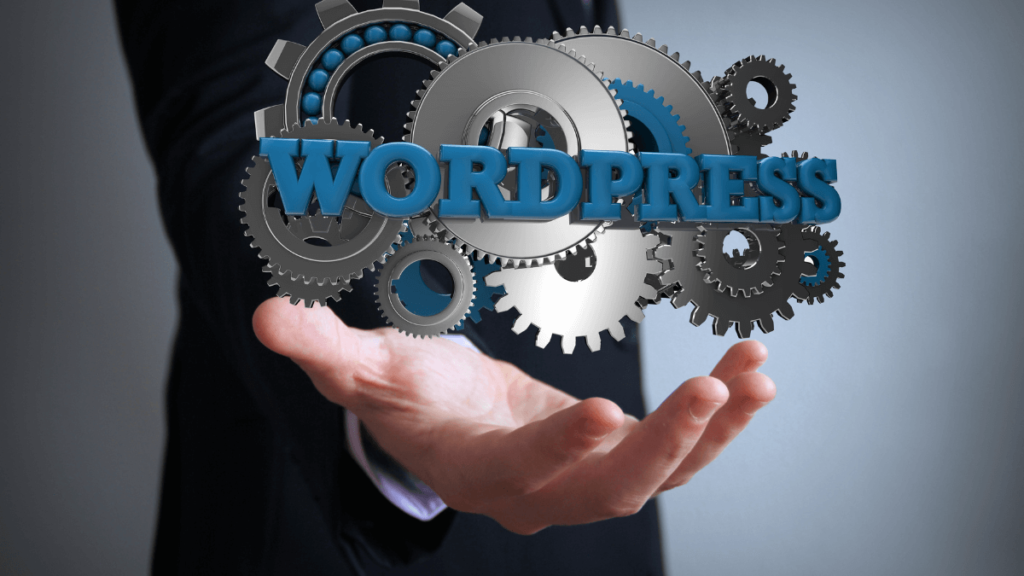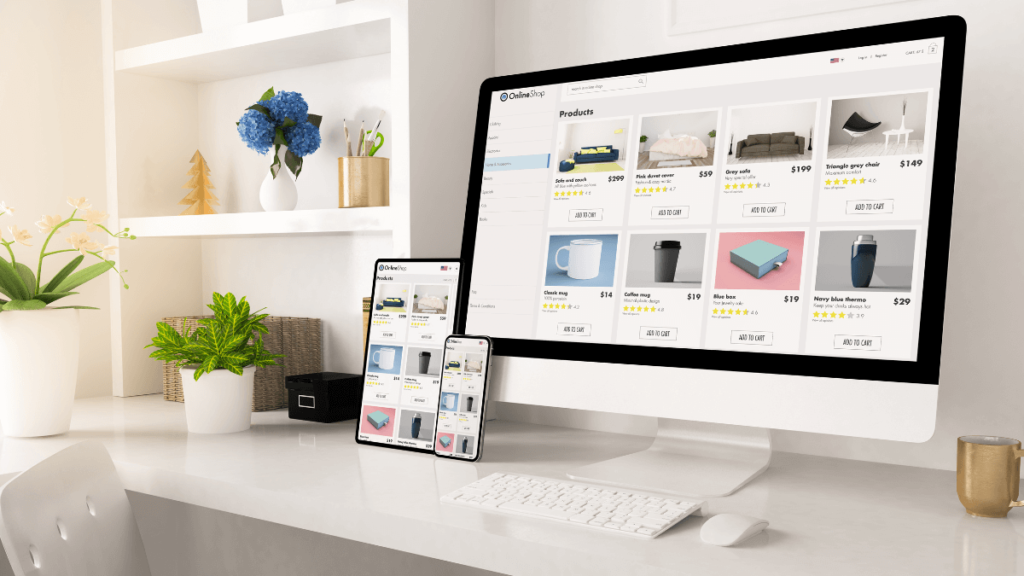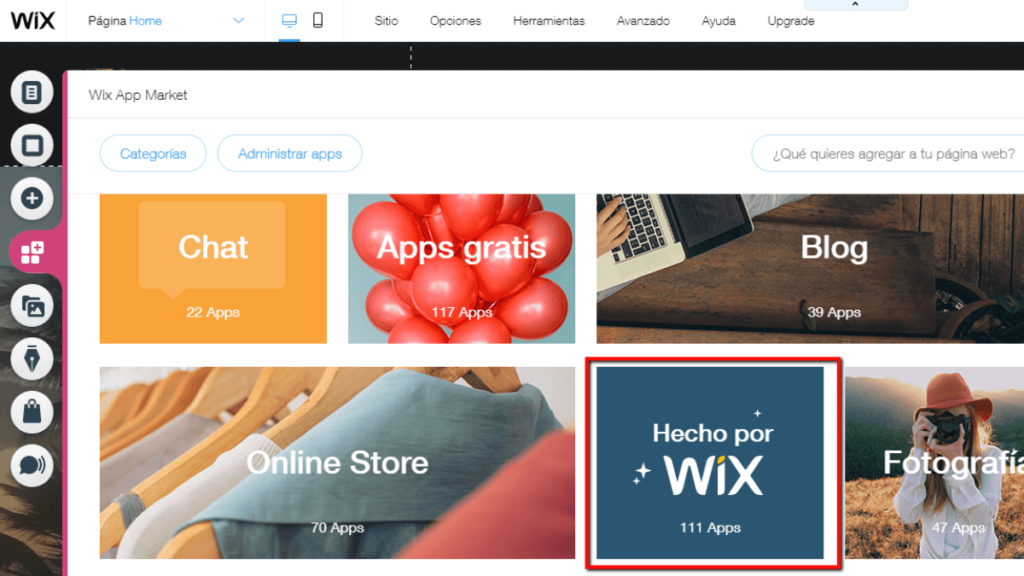
In today’s digital world, having a good website is important for connecting with customers and growing your business. For lots of companies, making a website that’s custom-built just for them works best. It means the site is made to fit their brand, what they offer, and what they want to achieve online.
This guide will explain what custom website development is all about. We’ll talk about why it’s often better than using ready-made templates or themes. You’ll find out about the many ways custom sites can be better, like how they work, how well they show up in search engines, how easy they are to use, and how they can help turn visitors into customers. We’ll also help you figure out if custom development is right for what you want to do. We’ll show you how working with the right developer can make your ideas come to life with a powerful custom website that gets results.
Whether you’re just starting online or you want to make your current website better, this guide will give you some useful tips on using custom web development to make the most of your investment. Let’s get started!
What is Custom Web Development?

Custom web development is making a website that’s just right for your business. Instead of using ready-made designs, a custom developer works closely with you to create a site from scratch. This means the website can be exactly how you want it, with everything tailored to fit your needs.
When you go for a custom-built site, the developer has full control over how it looks and works. They can make sure it does what you need it to do, whether that’s showing off your products, explaining your services, getting people interested, or making sales.
Technically, custom web development uses special coding languages like HTML, CSS, and JavaScript to make the site interactive and easy to use. Skilled developers also make sure the site is fast, easy to find on search engines, and works well on all kinds of devices.
The result is a website that’s unique to your business and helps you reach your goals online. That’s why custom web development is so powerful.
Types of Custom Website Development

When you originally started your small business online, a standard informative website may be all you need. However, as your business grows and your needs change, you’re probably ready for a more interactive website.
This is where custom web application development comes in. There may be several reasons why you want your website to be more interactive like you want to accept online payment from customers or you want to enable your customers to arrange their orders through your website.
As you research custom web app development, you’ll likely discover several ways an interactive website can benefit your business. We wanted to take a moment to highlight 5 types of custom web development that can help grow your business and simplify your life:
1. Content Management System (CMS)
We all know that content is king. This is one of the most effective ways to attract new leads to your website.
Long gone are the days when a simple 5 to 10-page website would do the job for your business. To regularly update the website with fresh content, many business owners add blogs to their websites. The key to being able to add this fresh content to your website regularly without being a web developer is to build your website using a CMS.
Based on your needs, you may decide that a custom CMS is necessary for your business. To choose this, talk to your web developer about what you need your CMS to complete.
2. Custom Relationship Management System (CRM)
Your business likely has some system in place to track leads, customers, referrals, business contacts, and more. To be more efficient, you may decide that you want a custom CRM solution and/or integrate it with other tools you use.
3. Company/Customer Web Portal
Creating a web portal can be very valuable for your business.
Depending on your business needs, you may decide to create a web portal to give your employees or customers access to the information on your website. You may also want to allow users to upload data to your website.
Regardless of your need, a web portal allows people to get information from your website as self-service.
4. Paperless workplace
With cost savings, increases in efficiency, and helping the environment, there is a move to a paperless office. Web application development can help businesses replace paper forms by offering a tool that allows your employees to securely access specific workflows from anywhere.
5. Online Store
along with the increasing number of consumers who want to buy products online, web development can integrate an online store with your website. While there are some simple solutions to accomplish this, you may find that a traditional e-commerce tool is best for your business.
These are just a few examples of custom web apps that can take your business to the next level. As you do your research on web development, you will find that there are solutions out there to address any of these needs. However, if you determine that your business needs a more tailored solution, developing a custom software solution that is built specifically for your business may be best.
Advantages of Custom Web Design

In today’s digital era, the Internet serves as an indispensable tool, offering solutions to a myriad of problems. With the reliance of the modern generation on virtual services, everything from essential services to educational resources can be found online. The proliferation of online shopping and readily available information has led to the creation of countless websites, catering to both large corporations and small businesses alike.
Static vs. Dynamic Websites
Websites can be broadly classified into static and dynamic categories. Static websites remain unchanged unless modified by developers, while dynamic websites offer flexibility, allowing users to make modifications without technical expertise.
Unique Design
Custom web design offers a distinct advantage by providing a unique identity to your brand. Unlike generic templates, a custom design ensures that your website stands out, setting it apart from competitors.
Tailored Functionality
Customization extends beyond aesthetics, encompassing functionality tailored to specific business requirements. Considerations such as user experience, navigation, and visual aesthetics are meticulously crafted to enhance the overall appeal of the website.
Branding Opportunities
Custom graphics and design elements contribute to brand recognition, leaving a lasting impression on visitors. Engaging content coupled with an intuitive design encourages prolonged engagement and improves conversion rates.
SEO Optimization
Custom website design facilitates the implementation of tailored SEO strategies, enhancing visibility and improving search engine rankings. By adhering to SEO best practices, businesses can increase online visibility and attract a larger audience.
Reputation Building
A custom website design fosters credibility and trust, reinforcing the reputation of the brand. By presenting a professional image, businesses can establish rapport with visitors and differentiate themselves in the competitive digital landscape.
Ownership and Control
With a custom website design, businesses retain ownership of the code and design, ensuring complete control over their online presence. This autonomy empowers businesses to adapt and evolve according to changing market dynamics.
Scalability
Custom web design allows for seamless integration of additional features and functionalities as businesses expand. While initial costs may be higher, custom websites offer superior return on investment and long-term growth potential.
Quick Details:
| Advantages | Details |
|---|---|
| Unique Design | Provides a distinct identity, setting the brand apart from competitors. |
| Tailored Functionality | Customized to meet specific business needs, enhancing user experience. |
| Branding Opportunities | Custom graphics and design elements contribute to brand recognition. |
| SEO Optimization | Facilitates tailored SEO strategies to improve search engine rankings. |
| Reputation Building | Fosters credibility and trust, enhancing the brand’s reputation. |
| Ownership & Control | Retains ownership of code and design, ensuring complete control over the website. |
| Scalability | Allows seamless integration of additional features as the business expands. |
How Much Does Custom Website Development Cost In Dubai?

Organizations venturing into website development or revamping their online presence often grapple with the initial question of budget allocation. Custom website development costs vary significantly, contingent upon the project’s complexity and precise requirements. Below are some general cost ranges:
1. Basic Website – £15,000 to £30,000
This category encompasses simple 5-10 page informative websites with minimal custom functionality.
2. Medium Website – £30,000 to £70,000
Medium websites offer a more comprehensive package with customized design, interactive elements, forms, blogs, user logins, and light integrations.
3. Complex Website – £70,000 to £150,000+
For highly sophisticated websites demanding heavy custom programming, databases, integrations, high traffic handling capabilities, robust security features, and extensive functionalities.
Cost Impacting Factors
Various factors influence custom website costs:
- Number of page templates and overall site size
- Custom design and branding needs
- Interactive features like applications, forms, blogs, etc.
- Third-party integrations required
- Content strategy and population
- Quality and performance testing needs
- Hosting and infrastructure considerations
- Desired launch timeframe
Complex requirements invariably drive costs higher.
Typical Cost Allocation By Phase
Budget allocation typically varies by project phase:
| Phase | Avg. Cost Allocation |
|---|---|
| Strategy | 5-10% |
| Design | 15-20% |
| Front-End Dev | 25-35% |
| Back-End Dev | 20-30% |
| Testing | 15-20% |
| Launch | 5-10% |
Programming constitutes the bulk of expenses.
Key Cost Considerations
Several additional factors impact website development costs:
- Monthly hosting fees – £100+
- SSL certificates – £50-£150 per year
- Domain registrations – £15+ annually
- Ongoing support & maintenance – 15-20% of total cost
- Future enhancements – Quoted based on needs
Adequate investment in core website foundations yields long-term dividends. For advanced systems, budgets exceeding £100,000 are realistic for robust custom implementations.
Website Development Cost Breakdown
| Website Type | Cost Range (£) | Description |
|---|---|---|
| Basic | £15,000 – £30,000 | Simple 5-10 page informative website with minimal custom functionality. |
| Medium | £30,000 – £70,000 | More comprehensive website with custom design, interactive features, forms, blogs, etc. |
| Complex | £70,000 – £150,000+ | Highly advanced website requiring heavy custom programming, databases, integrations, etc. |
WordPress Custom Website Development Cost In Dubai

WordPress is a popular open-source Content Management System (CMS) that allows customers to create and control websites without difficulty. It offers a user-friendly interface and an extensive library of Themes and Plugins, making it flexible for various Online stores and websites.
Pros:
- User-Friendly: WordPress has an intuitive interface, making it on hand for beginners without coding competencies.
- Extensive Plugin Ecosystem: An excellent-sized array of plugins allows users to enlarge and enhance website functionality without problems, including capabilities without coding.
- Community Support: With an extensive and energetic consumer network, finding help, tutorials, and answers to troubles is easier, fostering collaborative surroundings.
Cons:
- Security Risks: As a broadly used platform, WordPress can be a target for hackers, and poorly controlled sites or old plugins can pose protection risks.
- Regular Updates Required: WordPress, topics, and plugins want routine updates, which may be time-consuming and result in compatibility problems if not managed well.
- Customization Learning Curve: While simple customization is straightforward, superior customization might also require information on coding and can be tricky for beginners.
Pricing:
To utilize the WordPress software at no charge, individuals must acquire web hosting and secure a domain name. Certain hosting providers offer bundled packages that include both services, as exemplified by Hostinger-managed WordPress Hosting:
- The Premium hosting plan commences at $2.99 per month.
- The business hosting plan is initiated at $3.99 per month.
- The Cloud Startup hosting plan starts at $8.99 per month.
Shopify Custom Website Development Cost In Dubai

Shopify is the Second Big E-commerce CMS Platform that enables businesses to create and manage their online stores easily.
Founded in 2006, Shopify gives a person-pleasant interface, allowing marketers to set up their websites and stores. Customize the appearance and sense, and control merchandise, payments, and shipping.
It gives a range of templates and tools for designing and optimizing online stores, making it available for small and more significant businesses.
Additionally, Shopify integrates diverse fee gateways and affords analytics to assist merchants in tuning and enhancing their income performance.
The platform’s scalability, reliability, and extensive app surroundings make it a famous preference for organizations looking to set up a sturdy online presence.
Pros:
- Built for E-commerce
- 24/7 Support
- Multiple Themes
- Easy To Setup
- 14-Days Free Trial
- Free SSL Certificate
- A Ton of Apps And Plugins
Cons:
- More Expensive
- Additional Cost
- Limited Customization
- Bad Customer Service
Pricing:
- Basic Shopify: $29/month
- Shopify: $79/month
- Advanced Shopify: $299/month
- Shopify Plus: $2000/month
BigCommerce Custom Website Development Cost In Dubai

BigCommerce is an e-commerce CMS platform that allows organizations to create and manipulate online stores. It presents a robust and scalable solution for retailers of all sizes to sell services and products on the Internet.
With a user-friendly interface and a wide range of customizable templates, BigCommerce lets merchants design and customize their online shops without any technical expertise.
The platform offers features that include stock management, fee gateways, and integrated advertising and marketing tools to assist companies in Optimising their online presence.
Additionally, BigCommerce integrates with diverse third-celebration programs, facilitating seamless expansion and enhancement of the e-trade experience.
Overall, BigCommerce empowers groups to establish and develop their online presence by offering a comprehensive and flexible e-trade solution.
Pros:
- Robust Features: BigCommerce offers an extensive selection of functions, which include advanced e-trade tools, marketing options, and scalability.
- Responsive Templates: The platform provides customizable templates that can be responsive and visually attractive, ensuring a fine personal experience throughout devices.
- Integration Capabilities: BigCommerce seamlessly integrates with several 0.33-party applications, improving capability and taking into account enterprise expansion.
Cons:
- Cost: BigCommerce may be relatively costly compared to a few different e-trade systems, with a month-to-month subscription price and transaction costs for positive plans.
- Learning Curve: For novices, there may be a gaining knowledge of the curve while navigating the platform’s full-size functions and customization alternatives.
- Limited Blogging Functionality: While appropriate for promoting products, BigCommerce’s integrated blogging features are much less superior than those of specialized running blog platforms.
Pricing:
- Standard: $29.95 a month
- Plus: $79.95 a month
- Pro: $299.95 a month
- Enterprise: custom pricing
Wix Custom Website Development Cost In Dubai

Wix is a flexible website builder that consists of an eCommerce solution, allowing customers to create and control online stores with no trouble.
The Wix eCommerce CMS (Content Management System) empowers users to design visually appealing and purposeful online storefronts via a person-pleasant drag-and-drop interface.
It offers more than a few customizable templates, charge options, and stock control equipment, making it handy for beginners and skilled marketers.
Wix additionally gives features along with secure price gateways, order tracking, and advertising and marketing tools to enhance the overall E-Commerce revel.
With Wix, users can establish and customize their online stores correctly, allowing them to showcase merchandise, process transactions, and construct a successful online presence.
Pros of Wix:
- User-Friendly: Wix is thought for its smooth-to-use drag-and-drop internet site builder, making it accessible for individuals with little to no technical information.
- Templates and Design Options: Wix offers an extensive variety of professionally designed templates and sizeable customization options, permitting users to create visually appealing websites.
- App Marketplace: Wix has an extensive app market that allows users to add diverse functionalities to their websites without difficulty, including e-commerce, paperwork, and social media integration.
Cons of Wix:
- Limited Flexibility: While Wix presents a user-pleasant environment, it could lack the ability and customization alternatives that extra advanced users or builders are searching for in contrast to different platforms.
- Template Limitations: Despite loads of templates, users might locate boundaries in terms of unique layout elements, making it difficult to gain a truly one-of-a-kind look for their internet site.
- Dependency on Wix: Users who construct their websites on Wix are relatively tied to the platform, and migrating to every other web hosting company or content material management system can be difficult, potentially restricting future scalability.
Pricing:
- Business essential: $17/month
- Business unlimited: $25/month
- Business VIP: $35/month
What Are The Main Steps In Custom Web Development?

Custom web development involves several key steps to ensure the successful creation of a customized website that meets the specific needs and requirements of a business. The main steps of custom web development are as follows:
1: Requirements gathering and analysis
This initial phase involves gathering detailed requirements from the client regarding their website goals, target audience, desired features, and functionality. It also involves conducting a thorough analysis of the business’s industry, competitors, and market trends to inform the development process.
2: Plan and Strategy
At this stage, a comprehensive plan and strategy for the website development project is developed. This includes defining the website structure, navigation, content structure, and technology stack. The project schedule, milestones, and resource allocation are also determined at this stage.
3: Design and User Experience (UX) Design
The design phase focuses on creating the website’s visual elements and user interface (UI). Web designers work closely with clients to create wireframes, mockups, and prototypes to align website aesthetics and user experience with the client’s brand identity and goals.
4: Development
Once the design is approved, the development process begins. Web developers write code and create website functionality based on requirements and design specifications. This includes front-end development (HTML, CSS, JavaScript) for user interface and back-end development (server-side scripting, database integration) for data processing and dynamic functionality.
5: Create Content
During this stage, content such as text, images, videos, and other media elements are created and selected for the website. Content management systems (CMS) may be integrated to facilitate content updating and management.
6: Testing and Quality Assurance
Rigorous testing is performed to identify and fix any bugs, errors, or compatibility issues. This includes functionality testing, performance testing, cross-browser testing, and responsive design testing to ensure that the website functions smoothly on different devices and browsers.
7: Install and Start
Once the website is fully tested and approved, it is deployed on a live server or hosting environment. This includes transferring all the necessary files and configuring the database and server settings. Then the website is publicly accessible.
8: Maintenance And Support
After the website is launched, ongoing maintenance and support are necessary to ensure its optimal performance and security. This includes regular updates, bug fixes, security patches, and technical support to resolve any issues that may arise.
Conclusion
In today’s digital landscape, the significance of a custom-built website tailored to a business’s unique needs cannot be overstated. Custom web development offers a plethora of advantages over ready-made templates or themes, ensuring that a website not only reflects a brand’s identity but also delivers optimal functionality and user experience.
From bespoke designs to tailored functionalities, custom web development empowers businesses to stand out in a crowded online marketplace. The ability to create content management systems, customer relationship management systems, company/customer web portals, paperless workflows, and online stores provides businesses with the flexibility and scalability necessary for growth and success.
While the costs associated with custom website development may vary depending on project complexity and requirements, the investment yields long-term dividends in terms of brand recognition, credibility, SEO optimization, and user engagement.
Moreover, platforms like WordPress, Shopify, BigCommerce, and Wix offer customizable solutions catering to various business needs, further enhancing the accessibility and scalability of custom web development.
By adhering to the main steps of custom web development, including requirements gathering, planning, design, development, content creation, testing, deployment, and ongoing maintenance, businesses can ensure the successful creation and maintenance of a website that drives results and fosters growth in the digital realm.


